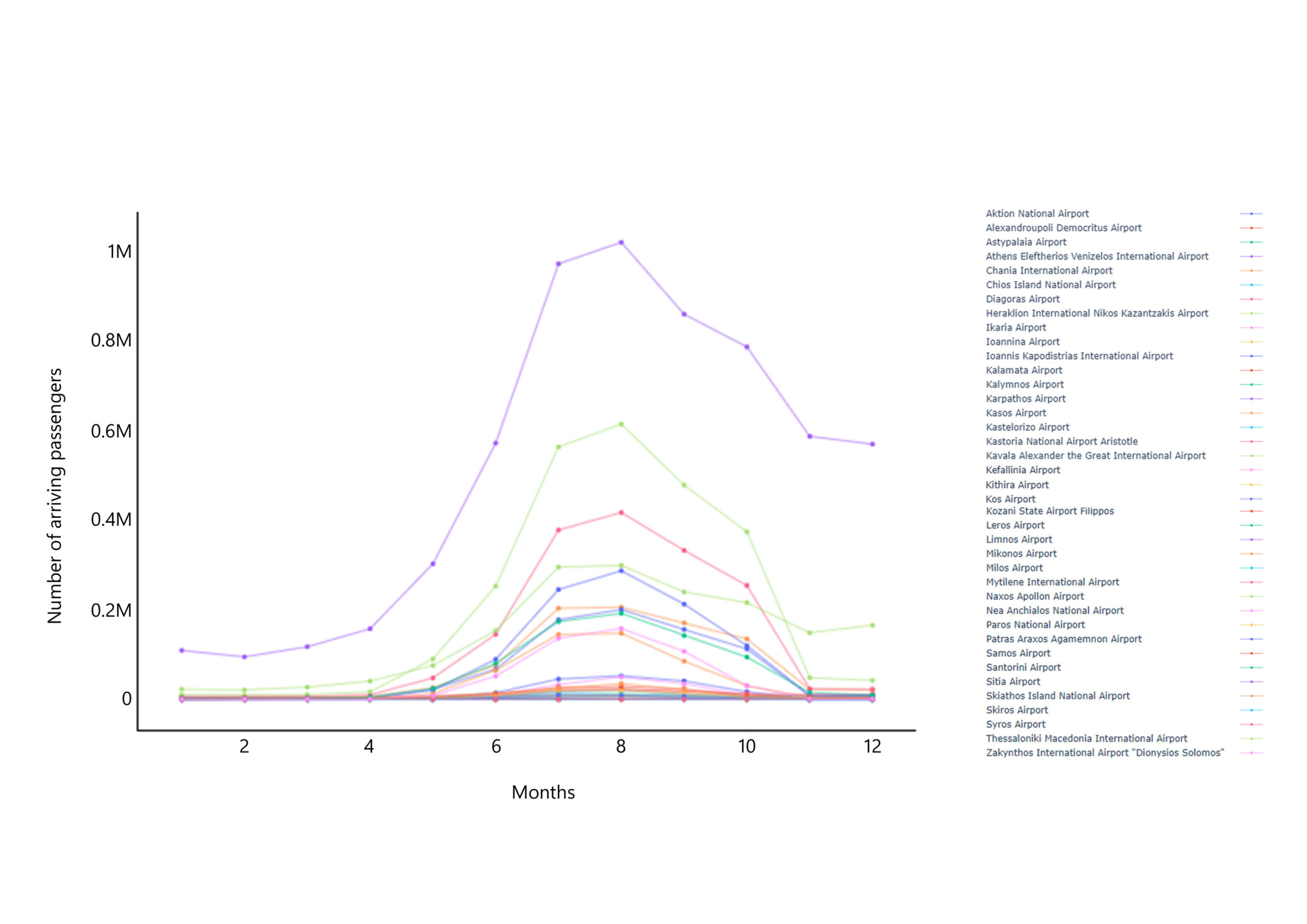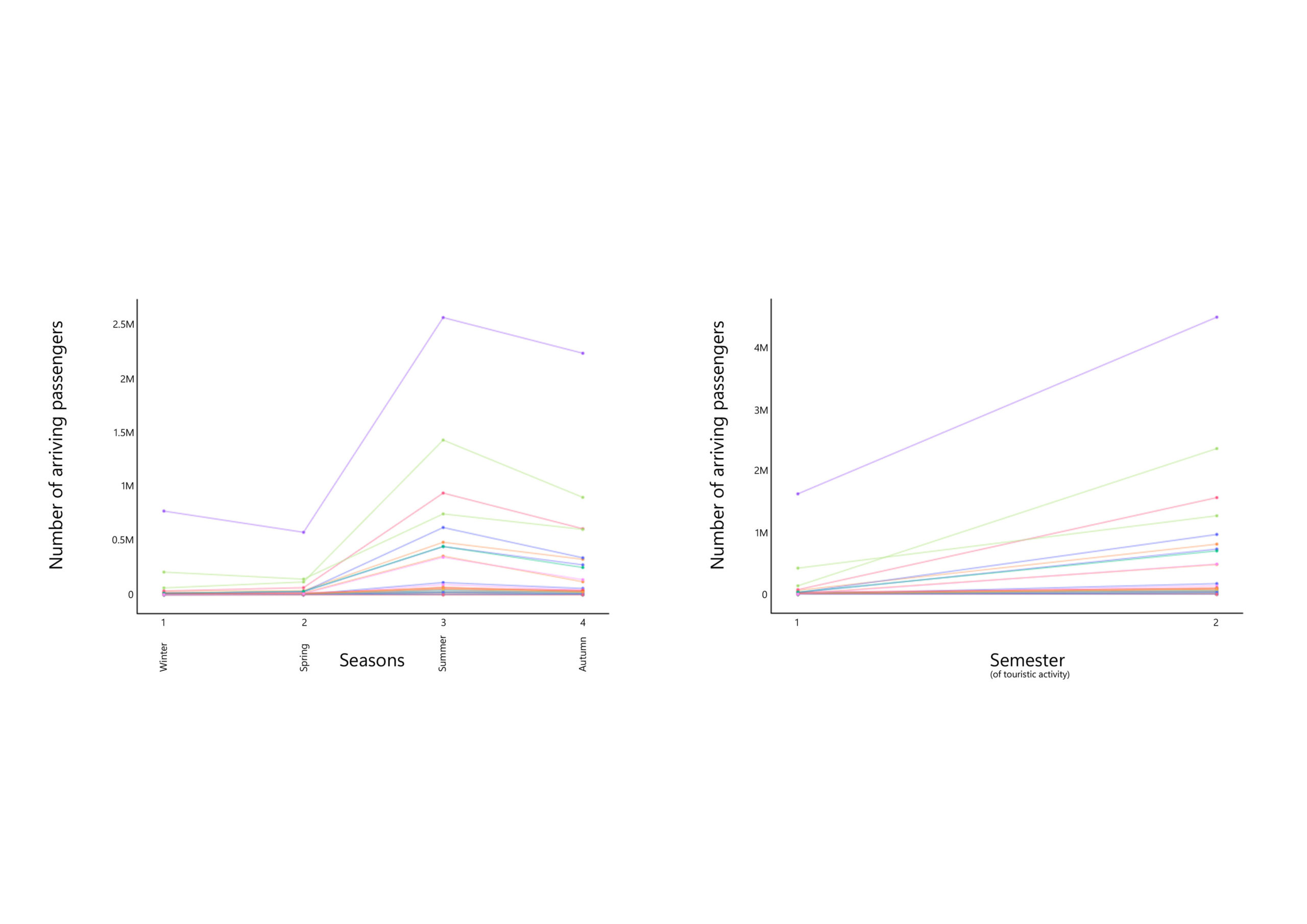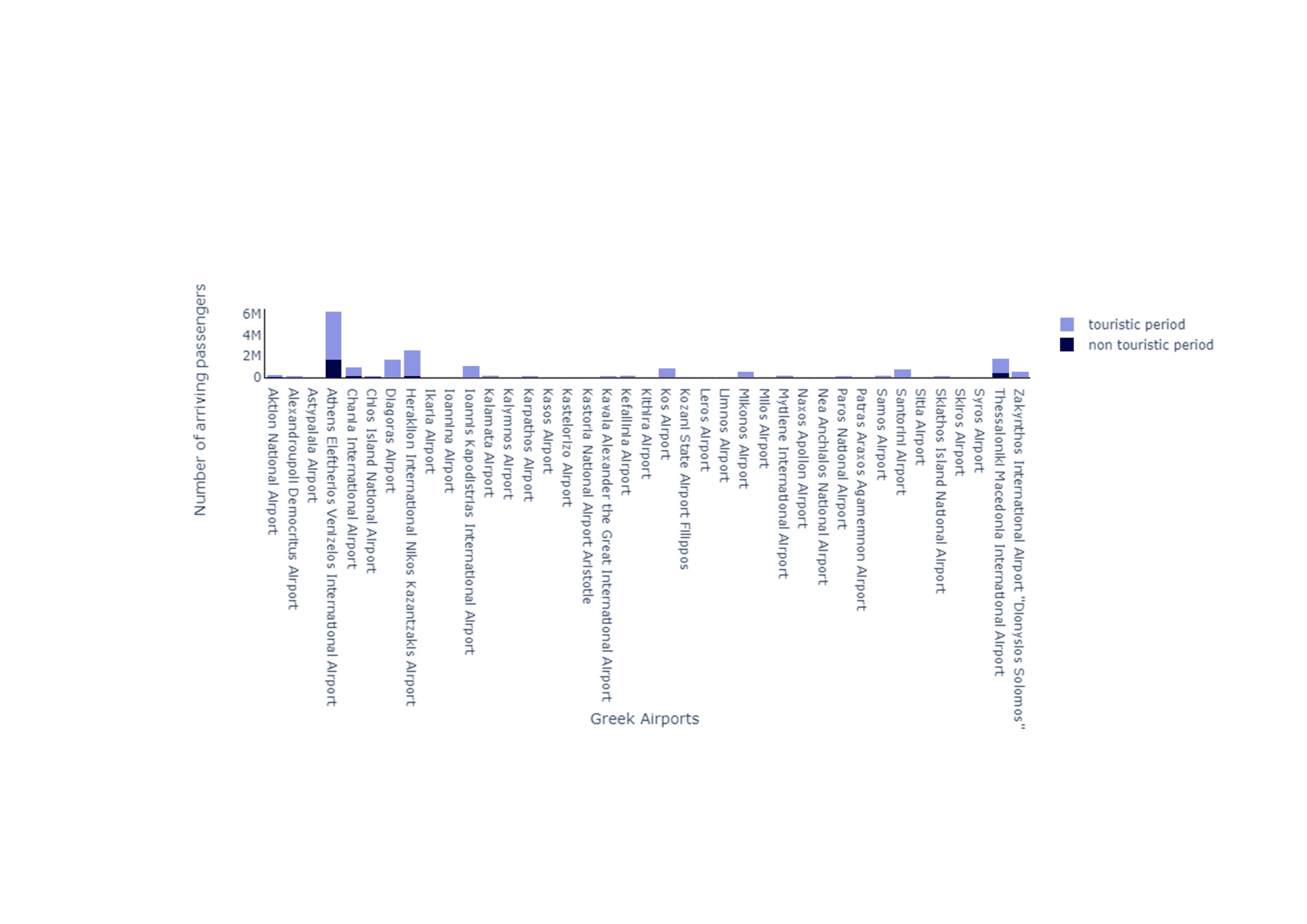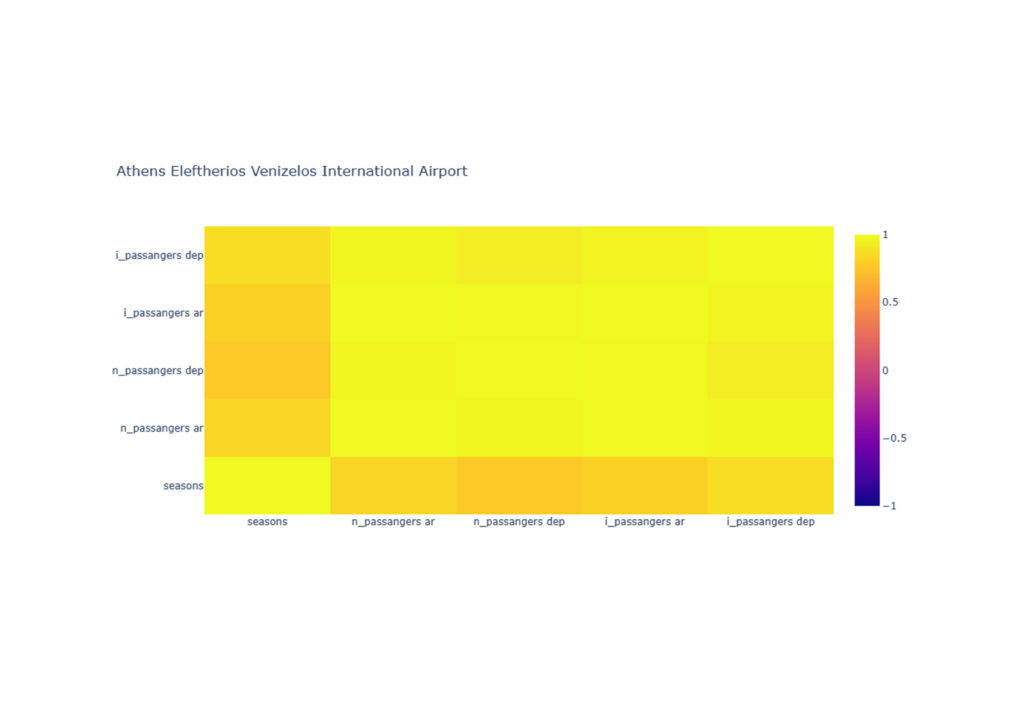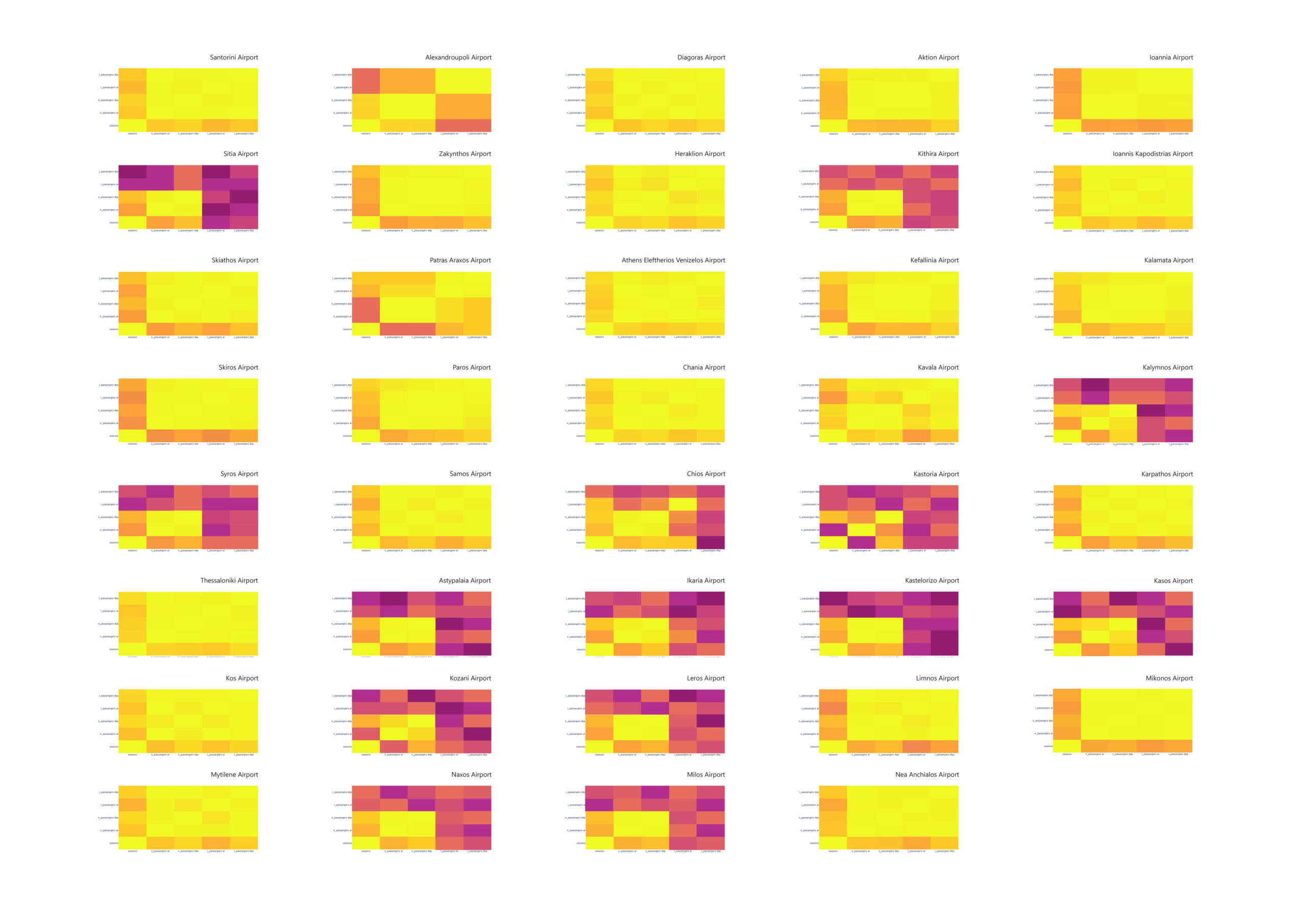The case of Greece
The air connections constitute critical components of the entire transportation industry in Greece. The geopolitical position of the country as well as its geographical features (mountainous landscape, islands and sea) make the air transport industry essential not only to the regional development and the growth of tourist activity, that comprises a fundamental factor of the national economy, but also to a greater extent, to the territorial and social cohesion of the Greek population.
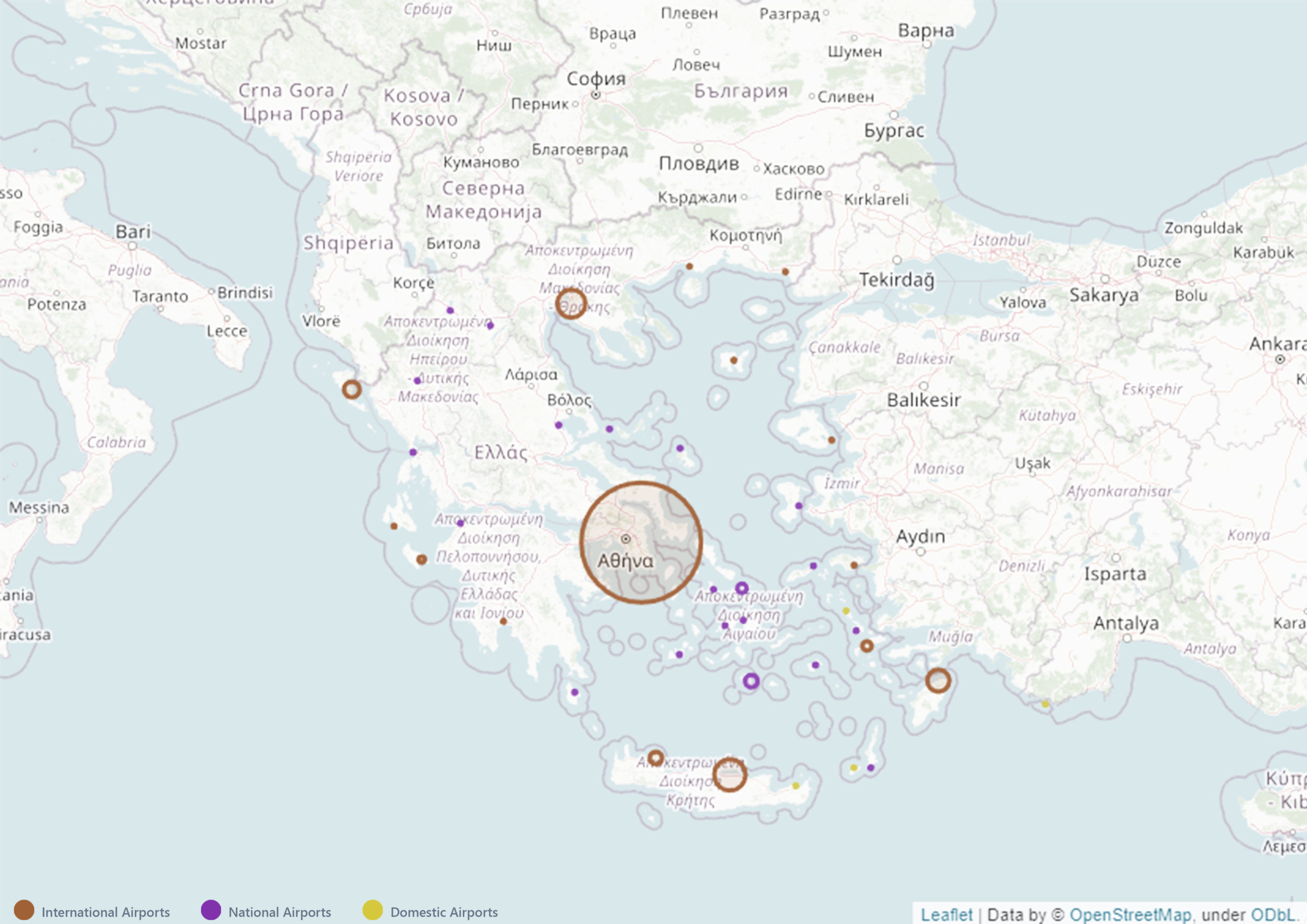
(classification by type and passenger traffic)By collecting data from the Hellenic Republic Civil Aviation Authority of Greece(Ministry of Infrastructure and Transportation) and the Humanitarian Data Exchange, by analyzing and visualizing that data using Pandas/Python, the project aims to realize the Greek air transport system’s dynamics and inadequacies through Data Science. A set of line charts, pie charts, scatter plots, bar charts, correlation maps, dashboards and maps are presented and contribute to obtaining a total perspective on the aviation industry for the Greek reality.
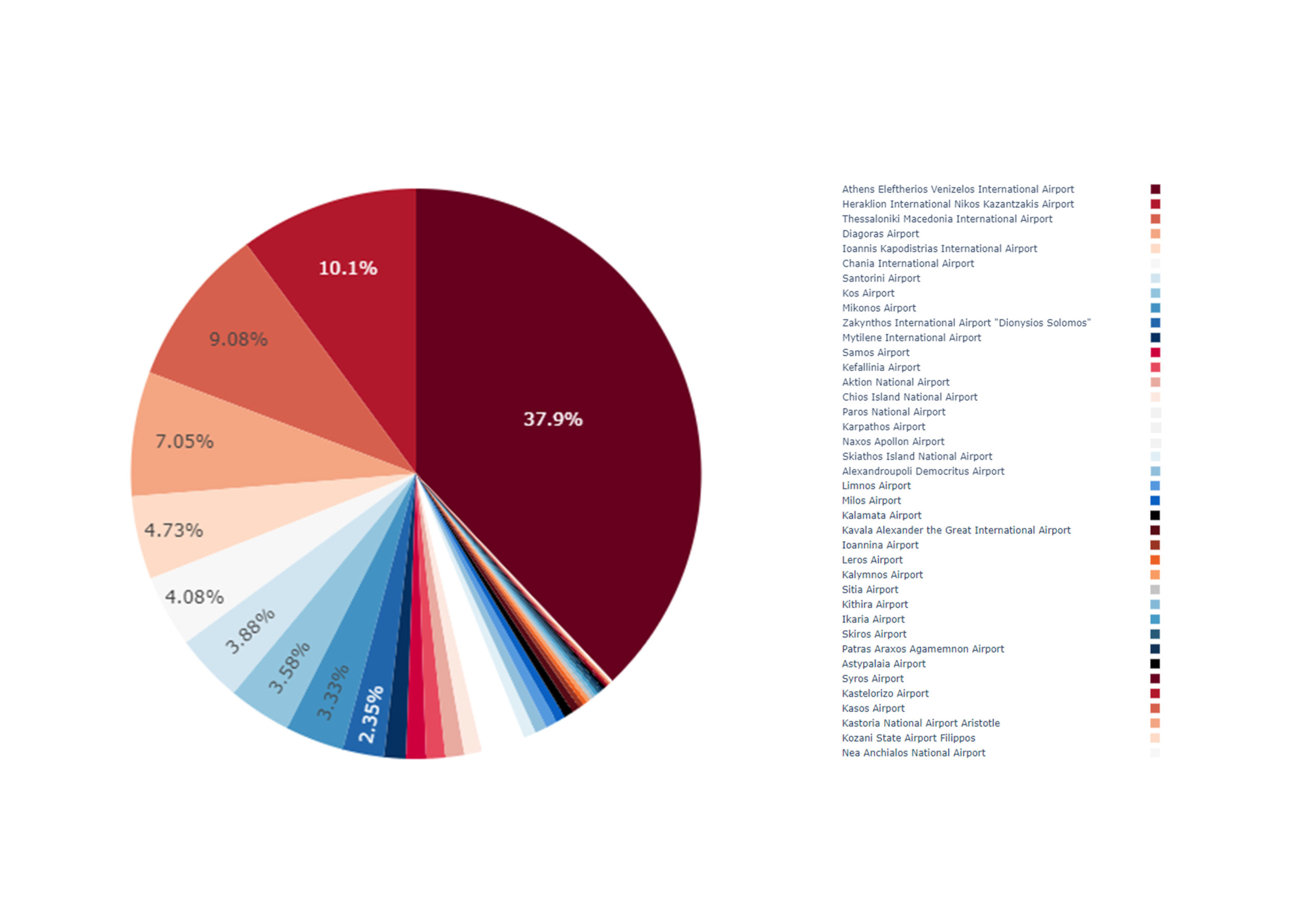
In terms of size, although Greece is small territorially, it has the most international airports compered to any other country in Europe. The service of the air transport industry in Greece is supported by an extensive network of 39 airports. 11 out of 39 airports are in the mainland while the majority of them are located on islands.
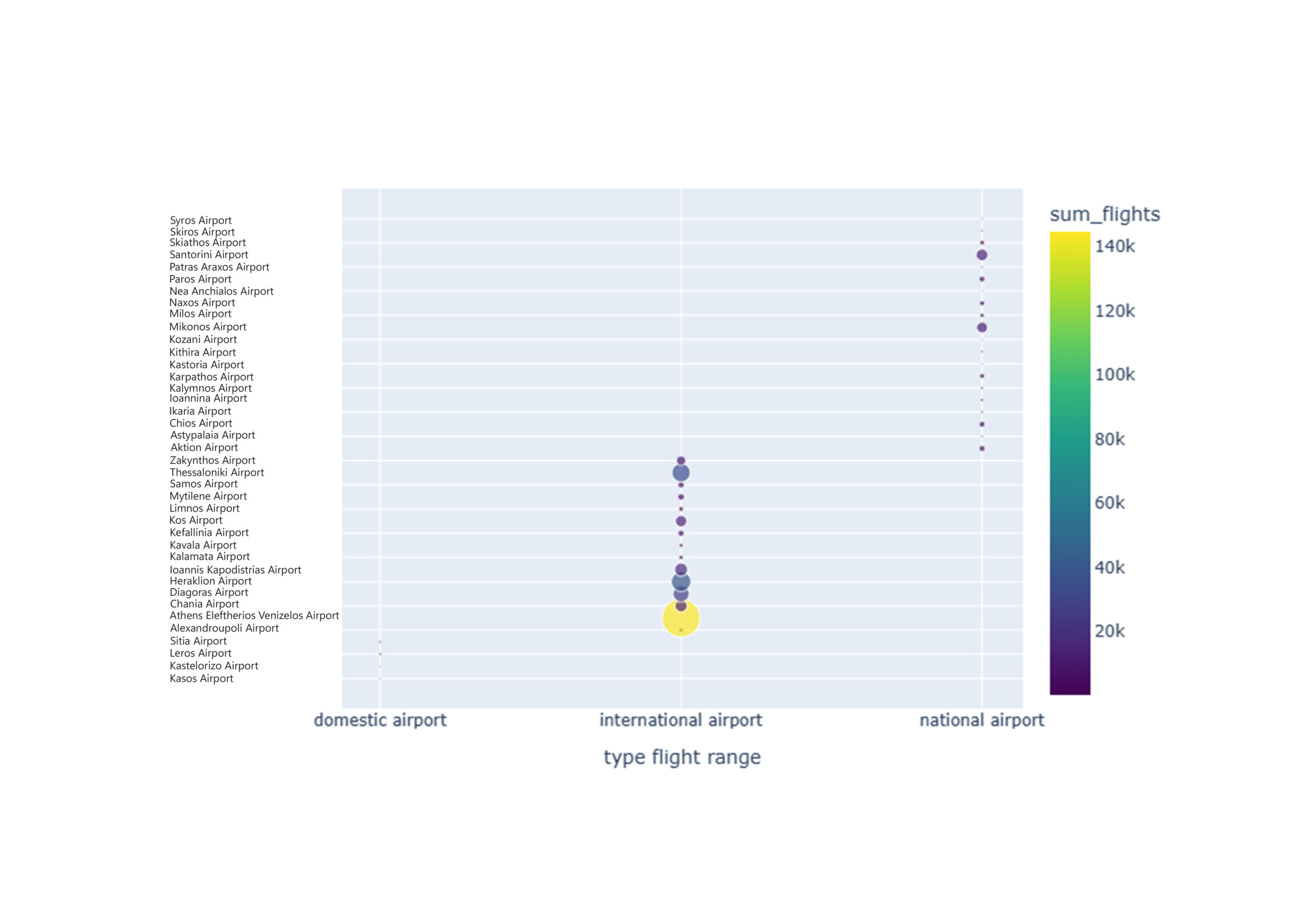
Nevertheless, the existing air transport network does not contribute in connecting the isolated areas/islands but operates in supporting the ever-increasing touristic activity. This becomes apparent when taking into consideration the number of arriving and departing passengers for both national and international flights throughout a year as well as the classification of airports by flight range of airplanes that operate to them.
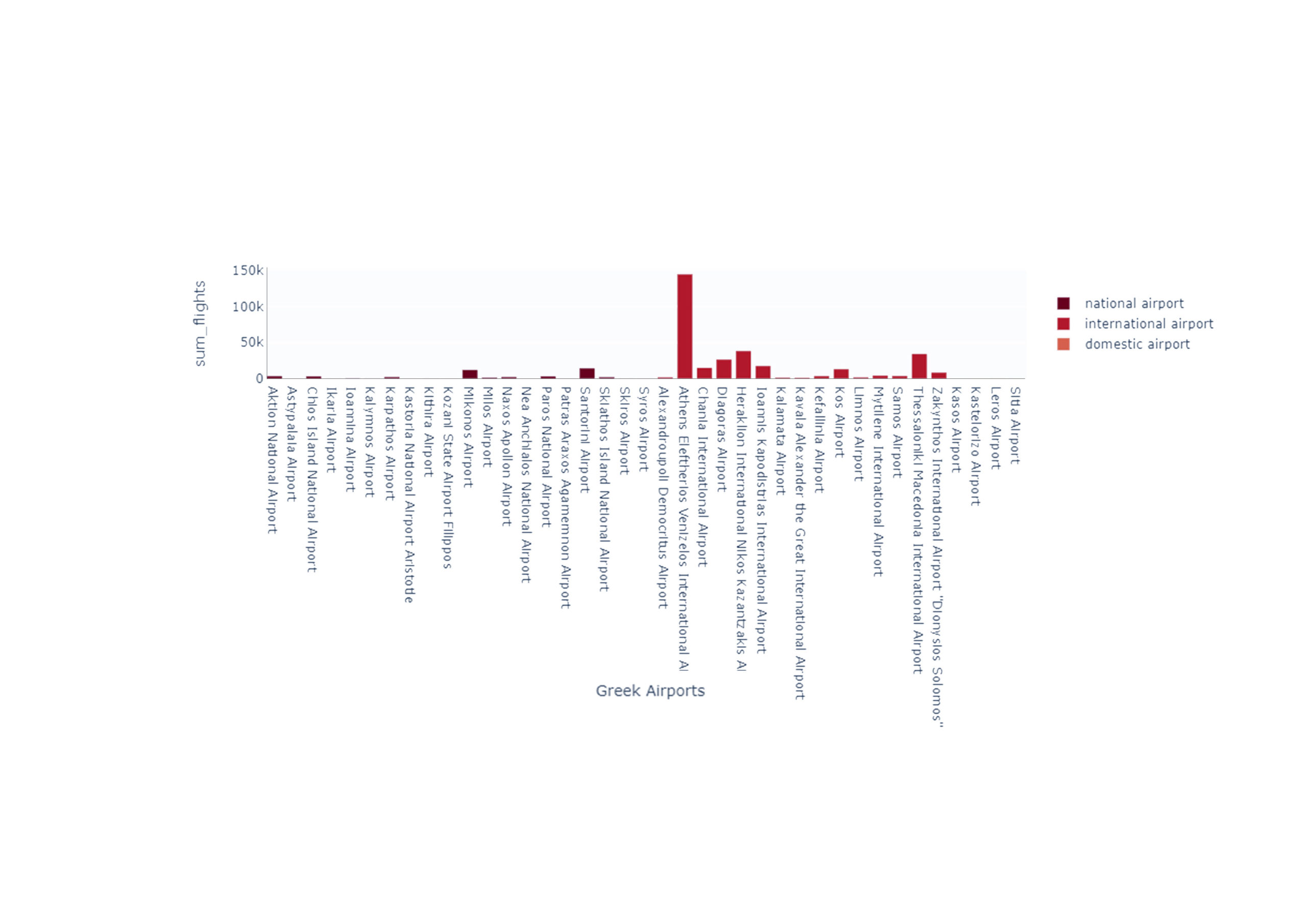
More precisely, apart from the international airports (15), the majority of the national ones (20) that are located on touristic island destinations handle both national and international flights during the touristic period, while normally along with the domestic airports (4) they receive only domestic flights year-round. It is generally accepted that aviation industry and tourism are intrinsically linked, especially for the case of Greece.
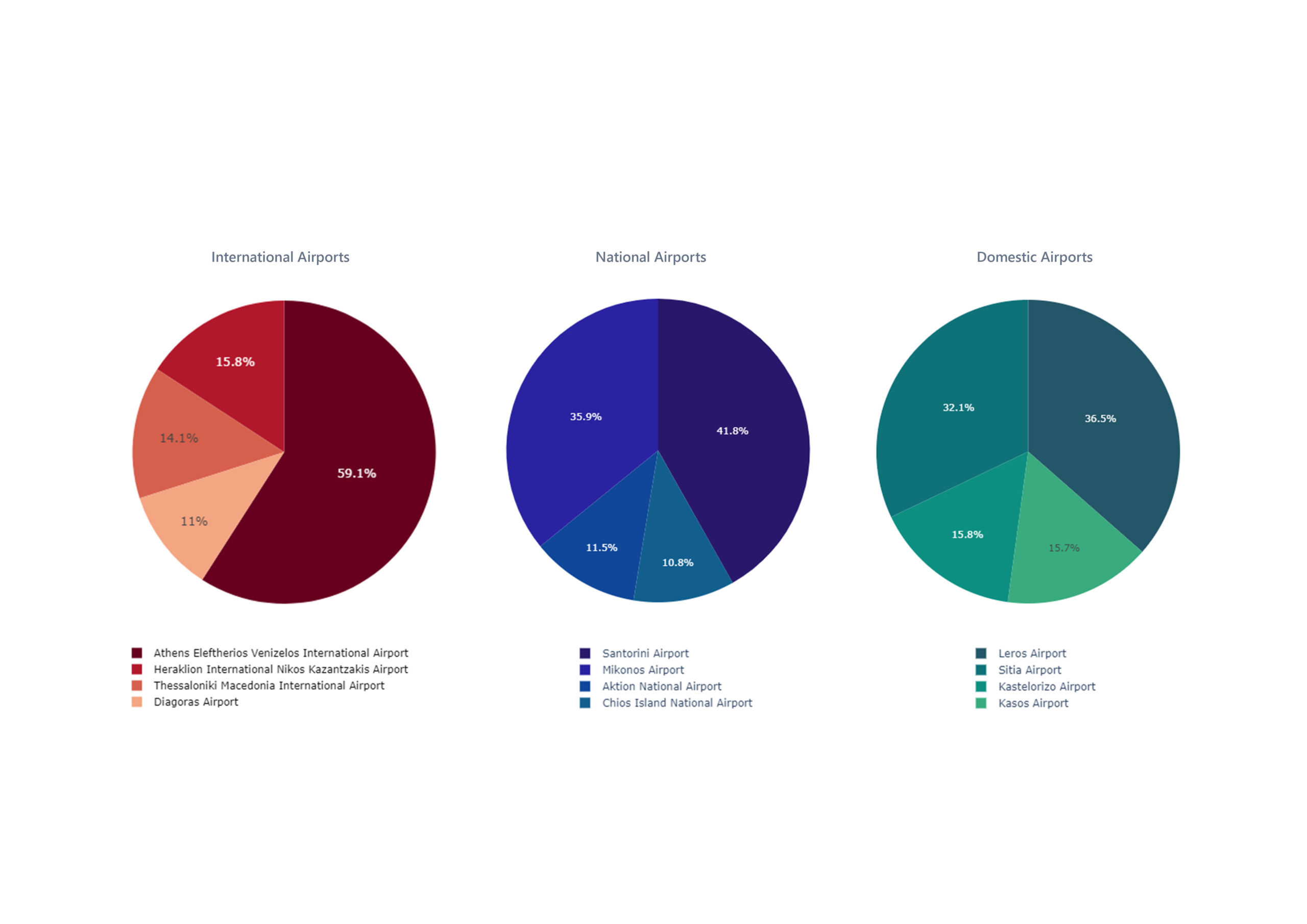
Therefore, the seasonality that characterizes tourism severely affects the air traffic, noticing intense fluctuations between the touristic (May to October) and non-touristic period (November-April). In addition, in regards to the passenger traffic, the arriving passenger traffic is always higher than the departing one and the vast majority of them belongs to international flights, a fact that highlights the strong connection between the two fields.
